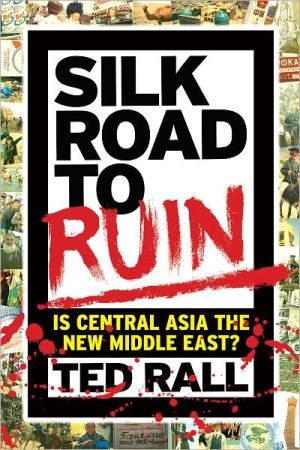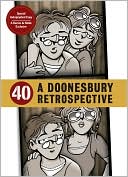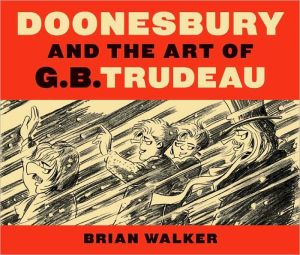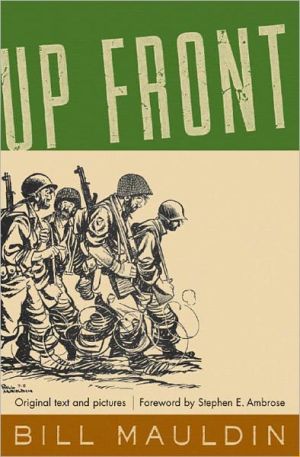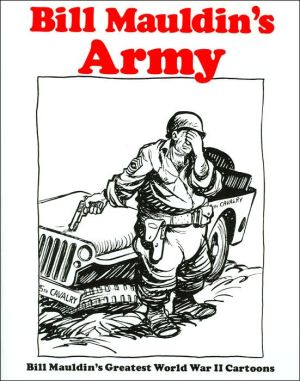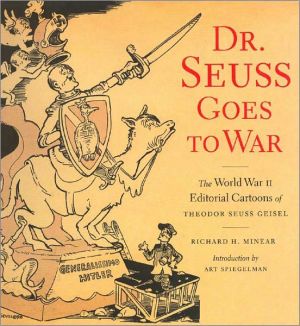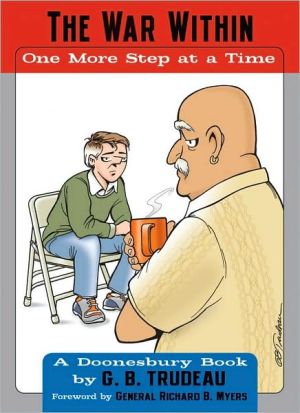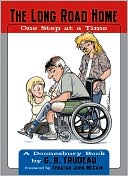Silk Road to Ruin: Is Central Asia the New Middle East?
Part graphic novel travelog, part tongue-in-cheek travel guide, here are the adventures of caustic cartoonist Rall in the wild and wooly central Asian countries, a powder keg sitting on tomorrow’s oil... Combines articles with comics chapters relating his experiences retracing the old legendary Silk Road starting with the sublime history of China and ending in the absurdity of the petty dictatorships of the “The ‘Stans” where Rall had the temerity -or was it blustery stupidity?- to go back,...
Search in google:
At a year-end publishers’ party at the zenith of the roaring 1990s, the editor of a "laddie" men’s magazine asked his newest staff writer to pitch him the wildest, most over-the-top idea for an adventure travel piece that he could think of. "You name it, we’ll do it!," the editor promised. Remembering his childhood fascination with the Kazakh S.S.R. and its description in National Geographic as "the most remote place on earth," Ted Rall proposed a reckless headlong plunge into the belly of post-Soviet Central Asia. "I’ll drive the Silk Road from Beijing to Istanbul," Rall said, "via Kazakhstan, Kyrgyzstan, Uzbekistan, Turkmenistan, Iran and Turkey. I won’t do research. I’ll just show up and see what happens." Five years after having been cut loose by the imploding Soviet Union the Central Asian republics—colloquially known as the Stans—were reeling from an identity crisis precipitated by economic collapse. Citizens of a great superpower woke up to find themselves in Third World anarchy. Closed societies were opening up for the first time. Guards at the Chinese-Kazakh border detained Rall for hours at one checkpoint after another; they still faxed Moscow for advice on how to handle him. They had never seen an American passport. What began as a lark yielded a stunning series of revelations. Elderly people were starving to death in nations sitting atop the world’s largest untapped reserves of oil and natural gas. Looters were cavalierly ambling around in flatbed trucks loaded with disinterred nuclear missiles. Statues of and slogans by crazy dictators were springing up as quickly as their corrupt military policemen could rob a passing motorist. And on the main drag in the capital city of each of these profoundly dysfunctional societies, a gleaming American embassy whose staff was quietly calling the shots in a new campaign to de-Russify access to those staggering energy resources. CIA agents, oilmen and prostitutes mixed uneasily and awkwardly in ad hoc British-style pubs where beers cost a dollar—a day’s pay and more than enough to keep out the locals. In an extreme case of the "oil curse," wealth was being pillaged by U.S.-backed autocrats while their subjects plunged into poverty. Meanwhile Taliban-trained Islamic radicals were waiting to fill the vacuum. It was a volatile mix. But did anybody care? Rall’s magazine account of his 1997 misadventures through Central Asia, "Silk Road to Ruin," was soon followed by a feature he launched on his Los Angeles radio talk show. "Stan Watch: Breaking News from Central Asia," was intended as a send-up of Americans’ disinterest in foreign affairs. Again, the joke turned serious. "Stan Watch"’s obscure news stories about the world’s most remote countries, which many Americans couldn’t even pronounce, became wildly popular. NPR and the BBC simulcast it. A 1999 assassination attempt on Uzbek president Islam Karimov became a subject of intense speculation. Americans, it turned out, were interested in the outside world. They just couldn’t read about it in their local newspaper. Soon, no one cared more about Central Asia than Rall. Transformed by what he saw being done in America's name and eager to sound the alarm, he became an expert. He returned to visit the region's most rural mountain villages. He brought two dozen ordinary Americans on the bus tour from hell. He went as a rogue independent and as a guest of the State Department. He returned to cover the American invasion of Afghanistan after 9/11, then went back again. Capitals moved, street names changed and the economic fortunes of entire nations turned on a dime from year to the next, but those changes merely reinforced Rall’s firm belief that Central Asia is the new Middle East: thrilling, terrifying, simultaneously hopeful and bleak, a battleground for proxy war and endless chaos. It is the ultimate tectonic, cultural and political collision zone. Far away from television cameras and Western reporters, Central Asia is poised to spawn some of the new century’s worst nightmares. VOYA Rall, a cartoon journalist who is both well informed about cultural and political upheavals in the contemporary Middle East and Central Asia and an adventurous traveler (to put it mildly), offers a great read that is packed with facts, accessible dissection of thorny issues, and a narration that reads like suspense fiction. Moving between narrative and graphic novella interludes, he recounts several trips that he has made in the past decade to the five "Stans," those Central Asian nations that were so recently part of the USSR. Turkmenistan, Tajikstan, Kazakhstan, Uzbekistan, and Kyrgyzstan share not only a Soviet history from which aspects of today's governments seem loathe to break away, but also a far older history as substantial areas of the Silk Route. Here Rall takes readers on scary bus trips where armed guards threaten Westerners-especially Americans, of course-but relent if the bargaining is conducted properly. Diarrhea is a constant and bloody companion. Sports include a deadly horseback event in which opponents whip one another in the eyes. Rall manages to discuss it all with respect and understanding for the people of these countries, albeit not for their governments nor that of the United States. Politically savvy teens will be fully engaged and find a role model in Rall. Their parents can hope that modeling is limited to his art and incisive reporting and not his affection for exotic danger.
\ VOYA - Francisca Goldsmith\ Rall, a cartoon journalist who is both well informed about cultural and political upheavals in the contemporary Middle East and Central Asia and an adventurous traveler (to put it mildly), offers a great read that is packed with facts, accessible dissection of thorny issues, and a narration that reads like suspense fiction. Moving between narrative and graphic novella interludes, he recounts several trips that he has made in the past decade to the five "Stans," those Central Asian nations that were so recently part of the USSR. Turkmenistan, Tajikstan, Kazakhstan, Uzbekistan, and Kyrgyzstan share not only a Soviet history from which aspects of today's governments seem loathe to break away, but also a far older history as substantial areas of the Silk Route. Here Rall takes readers on scary bus trips where armed guards threaten Westerners-especially Americans, of course-but relent if the bargaining is conducted properly. Diarrhea is a constant and bloody companion. Sports include a deadly horseback event in which opponents whip one another in the eyes. Rall manages to discuss it all with respect and understanding for the people of these countries, albeit not for their governments nor that of the United States. Politically savvy teens will be fully engaged and find a role model in Rall. Their parents can hope that modeling is limited to his art and incisive reporting and not his affection for exotic danger.\ \ \ \ \ School Library JournalAdult/High School-Part travelogue, part primer, Road meanders through the often-overlooked "stans" of Tajikistan, Kazakhstan, Turkmenistan, Kyrgyzstan, and Uzbekistan, with occasional excursions into the Xinjiang province of China, Afghanistan, and Pakistan. From 1997 to 2002, Rall endured a series of treks through the deserts and mountains of Central Asia. He had a knack for showing up at exactly the wrong time: he traveled through Kashmir just as the Taliban entered Pakistan as part of General Pervez Musharraf's 1999 coup, only to return a year later to lead a group of tourists into the middle of a siege as the Islamic Movement of Uzbekistan invaded Osh. Interspersed throughout this text, Rall's editorial cartoons provide breathing spaces in the form of graphic novellas. The author's travels are rife with indigestion, extortion, and 120-degree heat. Nevertheless, his awestruck descriptions of the region's natural beauty, crowded bazaars, and chaotic sporting tournaments will make adventurous readers want to see it all firsthand. The author takes a serious subject and infuses it with humor, examining the corruption, poverty, and political struggles that define Central Asia. Each page includes at least one illustration-photographs and maps as well as cartoons-and the volume includes historical summaries and country profiles that contextualize the events depicted.-Heidi Dolamore, San Mateo County Library, CA Copyright 2006 Reed Business Information.\ \
